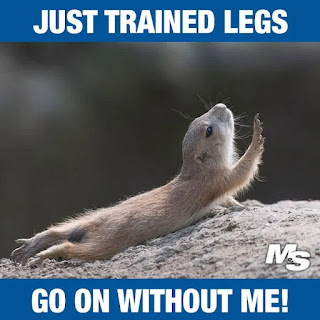It’s been a long time since I have had a “day after leg day” like yesterday. My last six week training cycle was almost all body weight training - think old school calisthenics - four sets of six reps of the fundamental human movements (push, pull, hinge, squat) mostly body weight but some accessory training with weights. Four different workouts repeated weekly for six weeks, which is very close to a Dan John style “Easy Strength” program. I am now on a short two week cycle of heavy strength and power, one day of each per week for two weeks.
Tuesday, however, was certainly a “day after leg day” kind of day. I needed to get in a paddle training session but wanted to break the day up with some perambulation midway. I’m not necessarily super happy about leaving my kayak and kit on an easily accessible beach while I walk for an hour or two, so I decided I would paddle up the Clyde River where I could stash the kayak in the bush out of sight and hike uphill for a bit instead.
The best trip I’ve done like this up the Clyde River is the Sunday we paddled up to the Buckenbowra River and hiked up Sugarloaf Hill. This time I planned to paddle a slightly shorter distance up Mundarlow Creek and possibly end up somewhere near the inexplicably named “Humbug Gully.” Paddling the Clyde River for sea kayak training is really cheating a bit. I endeavour to do all my training paddles on the ocean. I don’t think sheltered river or lake paddling translates all that well to paddling on the open ocean exposed to the unpredictable mix of wind, swell, and sea. However, this is the first, and will be the last, of my training paddles on the river, so perhaps I can be excused this once. Or not, I’m okay with being called out.
On a winter’s morning, it is common for a westerly wind to drain out the Clyde River valley but I had the tide with me paddling from my home bay, across the Batemans Bay bar (no drama today) and up the river. In the winter, midweek the Clyde River really is a peaceful place, reflections on the water, fish jumping, herons and pelicans among the oyster farms. It took a bit of paddling about to find a spot to land up Mundarlow Creek. It was about half tide and the shore was mostly knee deep (literally as I discovered) in sucking mud with clumps of oysters interspersed. Just as I was about to give up I found the terminus of an old fire trail with solid ground and I was able to land and heft the kayak up into the scrub.
The overgrown fire trail took me up to the Runnyford Road – a high quality gravel road – in a half an hour with the usual face slapping from post-fire regrowth. The Runnyford Road was dusty and dry, unappealing in a different way to regrowth, so I turned around. Back at the River, I drank tea, thought about how good it would be to have lunch with me, and enjoyed the peace of this backwater of the Clyde River on a sunny winter’s day.
There’s always a head wind on the Clyde River no matter which way you paddle. The tide up Mundarlow Creek seemed to be at stasis point so I expected to have the current with me once I paddled back to the main Clyde River, but, alas, the tide was still running west up the Clyde River. So I had both the wind and the tide in the wrong direction – or right from a training perspective - back out to Batemans Bay. Perhaps such an occurrence makes up for paddling on the river not the ocean.





































